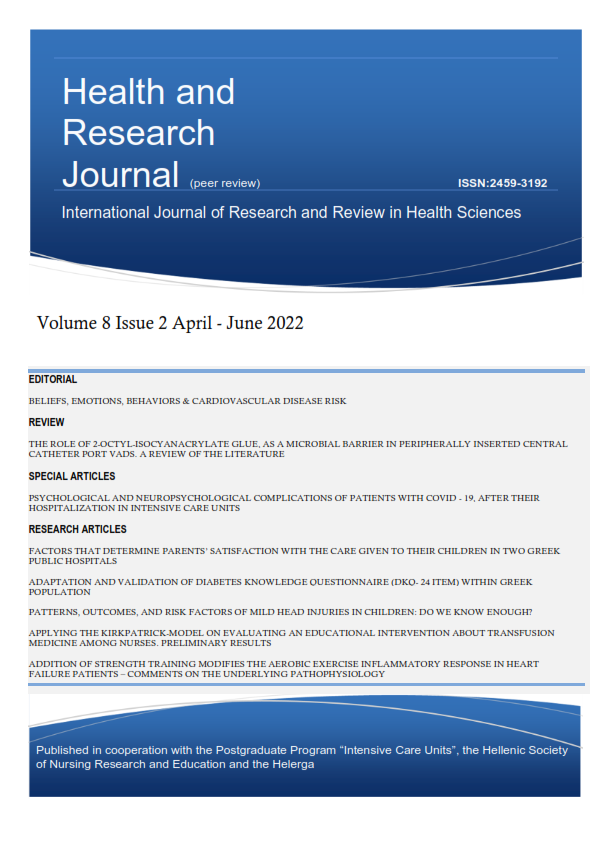The The role of 2 - Octyl-Isocyanacrylate Glue, as a microbial barrier in peripherally inserted central catheter port VADS. A review of the literature

Abstract
Abstract
Introduction: The implanted port catheters in chemotherapy which are connected to a Peripherally Inserted Central Catheter (PICC Ports) are used daily in clinical nursing practice, enabling the administration of intravenous fluids, blood, drugs and Total Parenteral Nutrition. The 2-octyl-isocyanoacrylate glue as an alternative intervention in preventing wound infection during PICC port insertion.
Aim: The aim of the present review was to explore the use of 2-octylisocyanacrylate glue as a microbial barrier in wound trauma and in peripherally central catheter insertion.
Methods: An electronic research was conducted in 4 databases. Sixty five papers focusing on the use of glue in surgical trauma closure and healing were analyzed.
Results: The literature demonstrates significant benefits of the 2-octyl-isocyanacrylate glue in comparison to other tissue adhesives, when placed on skin incisions. The 2-octyl-isocyanacrylate glue seems to provide an effective barrier to microbial penetration by Gram-positive and Gram-negative motile and non-motile species.
Conclusions: The use of the 2-octyl-isocyanacrylate seems to be an effective method for skin closure and healing in patients undergoing PICC Port implantation whilst causing no side effects such as allergies, skin irritation or pain during the procedure.
Article Details
- How to Cite
-
Delezos, C., Katsoulas, T. ., Mariolis-Sapsakos, T. ., & Konstantinou, E. . (2022). The The role of 2 - Octyl-Isocyanacrylate Glue, as a microbial barrier in peripherally inserted central catheter port VADS. A review of the literature. Health & Research Journal, 8(2), 68–79. https://doi.org/10.12681/healthresj.30154
- Section
- Reviews
Copyright notice:
The journal "Health and Research Journal" reserves the rights for copyright of the content of the website and also the copyright of the articles published.
By virtue of their appearance in this journal, the articles are free to be used for non-commercial purposes. However, the articles cannot and must not be used in anyway, published elsewhere or modified without any reference to the author and the first publication of the article.


